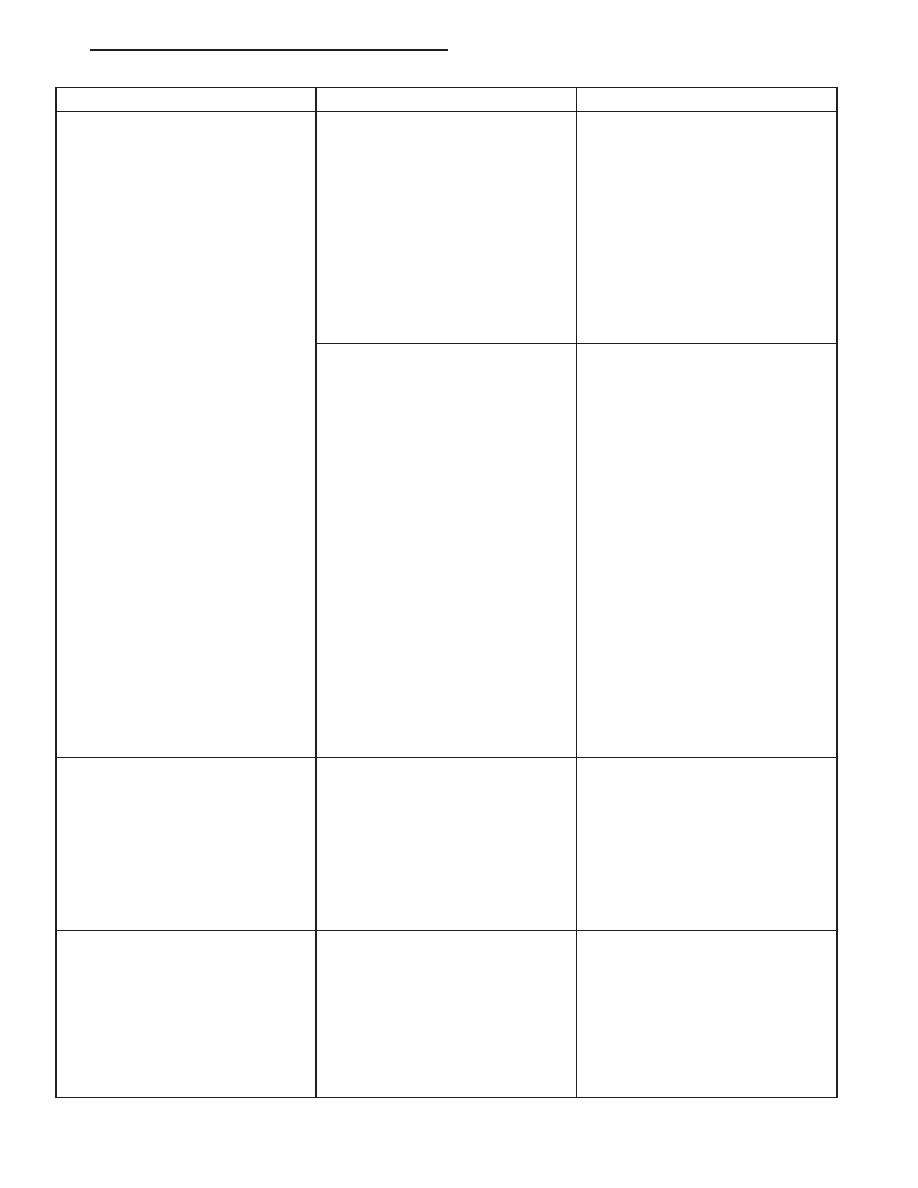Content .. 1017 1018 1019 1020 ..
Dodge Durango (HB). Manual - part 1019

CONDITION
POSSIBLE CAUSE
CORRECTION
ENGINE STALLS OR ROUGH IDLE
1. Vacuum leak.
1. Inspect intake manifold and
vacuum hoses, repair or replace as
necessary.
2. Faulty crank position sensor
Replace crank position sensor
3. Faulty coil.
3. (Refer to 8 - ELECTRICAL/
IGNITION CONTROL/IGNITION
COIL - REMOVAL)
4. Incorrect cam timing.
4. (Refer to 9 - ENGINE/VALVE
TIMING - STANDARD
PROCEDURE)
1. ENGINE LOSS OF POWER
1. Dirty or incorrectly gapped spark
plugs.
1. (Refer to 8 - ELECTRICAL/
IGNITION CONTROL/SPARK PLUG
- CLEANING).
2. Dirt or water in fuel system.
2. Clean system and replace fuel
filter.
3. Faulty fuel pump.
3. (Refer to 14 - FUEL SYSTEM/
FUEL DELIVERY/FUEL PUMP -
DIAGNOSIS AND TESTING).
4. Blown cylinder head gasket.
4. Replace cylinder head gasket.
5. Low compression.
5. (Refer to 9 - ENGINE -
DIAGNOSIS AND TESTING), repair
as necessary.
6. Burned, warped or pitted valves.
6. Replace as necessary.
7. Plugged or restricted exhaust
system.
7. Inspect and replace as
necessary.
8. Faulty coil.
8. (Refer to 8 - ELECTRICAL/
IGNITION CONTROL/IGNITION
COIL - REMOVAL).
9. Incorrect cam timing.
9. Refer to Engine Timing in this
section.
1. ENGINE MISSES ON
ACCELERATION
1. Spark plugs dirty or incorrectly
gapped.
1. (Refer to 8 - ELECTRICAL/
IGNITION CONTROL/SPARK PLUG
- CLEANING).
2. Dirt in fuel system.
2. Clean fuel system.
3. Burned, warped or pitted valves.
3. Replace as necessary.
4. Faulty coil.
4. (Refer to 8 - ELECTRICAL/
IGNITION CONTROL/IGNITION
COIL - REMOVAL).
1. ENGINE MISSES AT HIGH
SPEED
1. Spark plugs dirty or incorrectly
gapped.
1. (Refer to 8 - ELECTRICAL/
IGNITION CONTROL/SPARK PLUG
- CLEANING).
2. Faulty coil.
2. (Refer to 8 - ELECTRICAL/
IGNITION CONTROL/IGNITION
COIL - REMOVAL).
3. Dirt or water in fuel system.
3. Clean system and replace fuel
filter.
HB
ENGINE - 3.7L SERVICE INFORMATION
9 - 1075